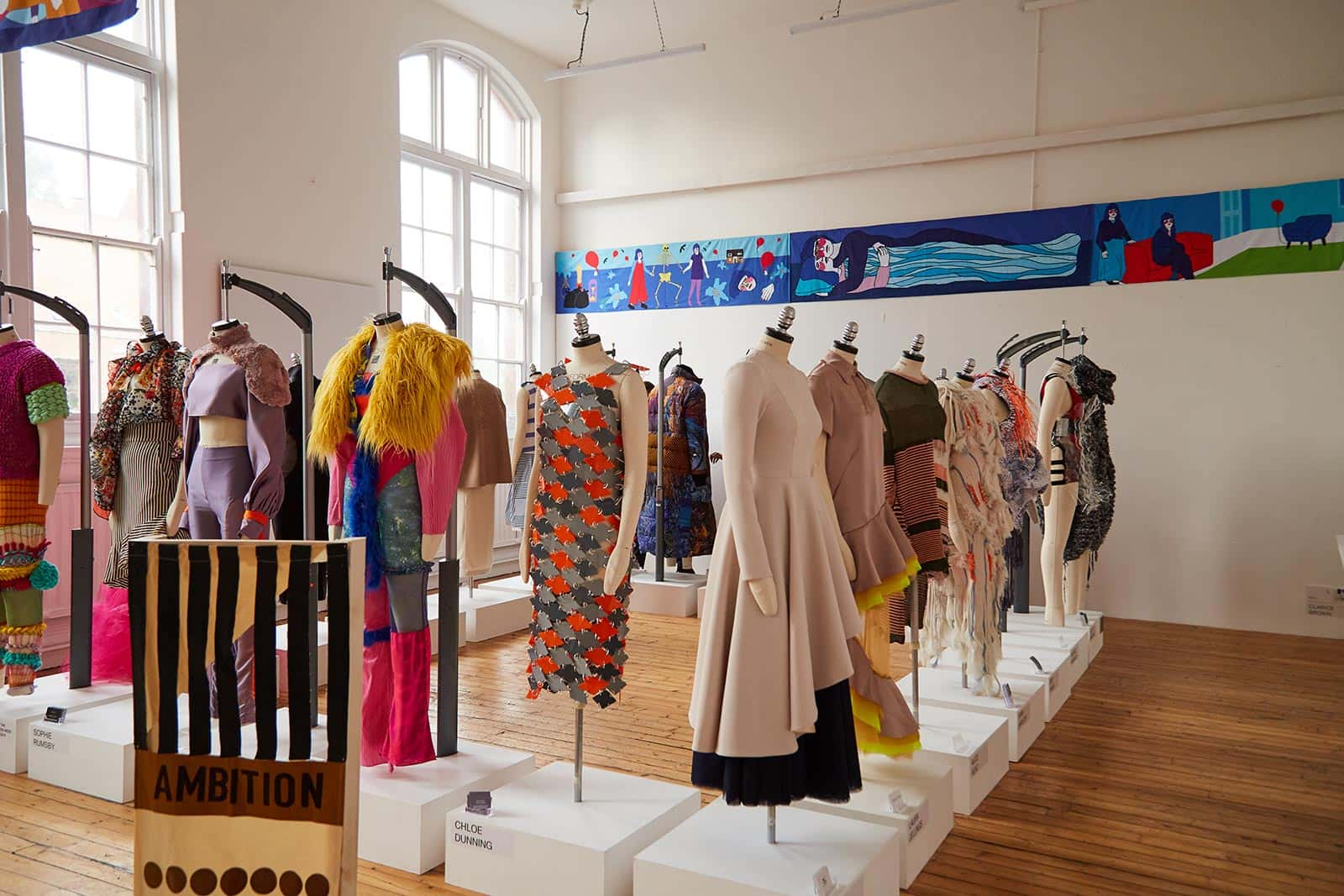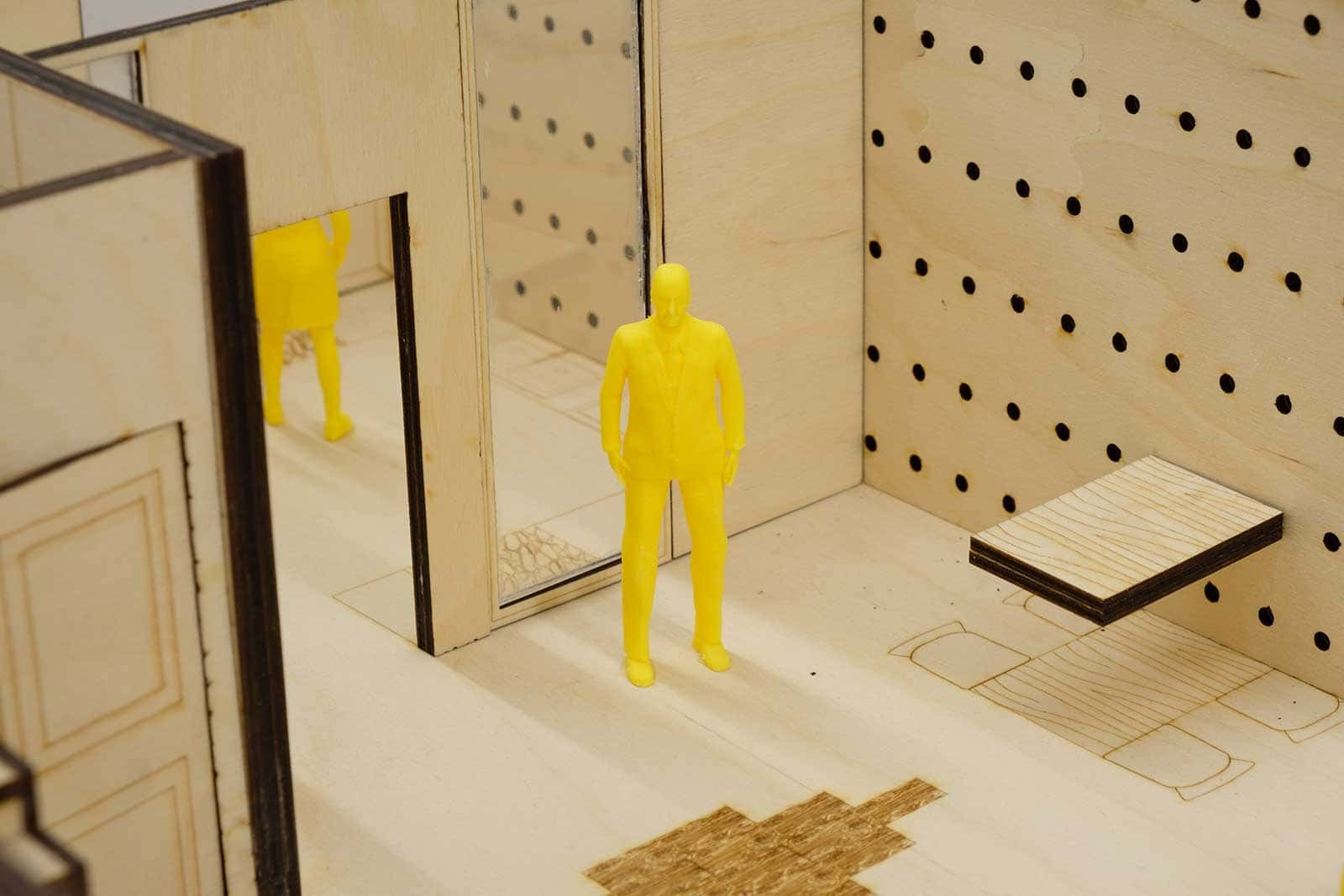


Portfolio advice
Here at Norwich, seeing your work and hearing about your creative journey is an important part of welcoming you into higher education and all it has to offer you.
Portfolio advice
Portfolios should show examples of your work – both finished and work in progress – that demonstrate your interests and skills. Your portfolio should be made up of work that reflects your creativity, personal interests and influences, as well as demonstrating your technical skills and ability. It doesn’t have to be perfect.
We know that it can be stressful trying to put a portfolio together on your own, so we aim to make the experience as easy for you as we can. You don’t need to spend a long time making the perfect work, as we can assess your potential from your work in progress.
Our portfolio top tips
- Tell a story with your work. Create a portfolio that includes work appropriate to the subject you are applying for.
- We like to see your project journey and influences, not just the outcomes. Even work that may not have gone as planned.
- Show us how you have taken creative risks to push boundaries and explore possibilities.
- Keep it individual to your influences and passions. If you have it, include work you’ve created outside of school or college.
- Choose a format that shows your work at its best. Make sure that you use neutral backgrounds, avoid repetition, and use subtle labelling.
- Ensure photographs of work are clear and well-lit so we can see all the detail.
- Aim to curate 10-15 pages or slides. Do not put too much on each page (1-3 images per page is a good rule of thumb).
- If submitting a film or animation, please look at the specific course guidance.
- Don’t worry about making it the perfect portfolio – there is no such thing! We just want to see who you are.
How to submit your portfolio to us
There are two different ways to submit your portfolio depending on the course you’ve applied for and your applicant status. We’ll send you detailed information and guidance on the next steps once we’ve received your application from UCAS.
- If you’re attending an in-person interview, please bring your portfolio with you on the day. You’ll have a relaxed and friendly review with one of our academic reviewers and current students.
- If you’re submitting your work online, please upload a link to your digital portfolio. Make sure we have permission to view it — school or college accounts sometimes restrict access for external users, so check your sharing settings before sending the link.
What should I include in my portfolio?
Animation portfolios
- A showreel of animation or film work
- Drawings, paintings or illustrations that demonstrate your skills, including life drawings, still life, images from observation (people and landscapes) or concept designs of characters and backdrops
- Use of digital software, which may include Flash, After Effects, Adobe Creative Suite, Coral Painter, ZBrush, Maya or Mudbox
- Scripts or short stories
- Story boards
- Models and/or sculptural works in any medium
- Experimentation in a range of styles and approaches, in addition to your own style
Animation and VFX portfolios
- A showreel of animation or film work
- Drawings, paintings or illustrations that demonstrate your skills, including life drawings, still life, images from observation (people and landscapes) or concept designs of characters and backdrops
- Use of digital software, which may include Flash, After Effects, Adobe Creative Suite, Coral Painter, ZBrush, Maya or Mudbox
- Scripts or short stories
- Story boards
- Models and/or sculptural works in any medium
- Experimentation in a range of styles and approaches, in addition to your own style
Architecture portfolio
- Dimensional creative work such as drawings, sketches, collages, paintings, photographs or illustrations that demonstrate technical ability and creativity. Try to include a wide range of different media and show work which demonstrates a variety of skills such as observational, landscape, life, perspective, architectural and technical drawing; use of colour, form, scale, accuracy, composition and creative imagination in a mix of digital and hand rendered images.
- Dimensional creative work (usually documented through good quality photographs). You may include models, product prototypes, artefacts, sculptures or installations that you have designed and constructed. Try to demonstrate your understanding of scale, form and structure through the work you include.
- Work created using Adobe Photoshop, Adobe Illustrator, Adobe InDesign, CAD, Sketch Up or other architectural design software.
- Don’t be afraid to show us work that you don’t think was successful. Be prepared to tell us why, and talk about what you learned in the process.
Design for Publishing
- Editorial work and page layout
- Book and magazine design
- Typography
- Photography and art direction
- Illustration
- Work created using Adobe Creative Suite or other appropriate design software
- Spatial and environmental graphics
- Digital and screen design
- Drawing skills
- Print making
- Book binding
- Suggestions for context: books, magazines, journals, newspapers, websites
Electronic Music and Sound portfolio
- Creative work in music, visual arts, film, or games: Share projects that reveal your curiosity and engagement with the world around you.
- Electronic music production: Show us your potential through original electronic music pieces created as part of a course or independently.
- Original sound design: Include any sound work you’ve created for film or other projects, whether done in school, college, or at home.
- Performance recordings: If you play an instrument, include videos or recordings, whether solo or as part of a group or band.
Fashion portfolio
- Drawing: Life drawing or still life
- Painting, illustration, collage
- 3D work: Accessories, garments, sculpture, fabric samples
- Fabric and colour work
- Garment or accessory designs
- Image making using Photography or Adobe Creative Suite (Photoshop, illustrator)
Film and Move Image Production portfolio
- Short film (max duration 5 minutes – complete films only)
- 6 still images – photographs, Photoshop images – organised in a sequence to tell a story
- A short script, short story, or other creative writing – no more than 3 pages
Fine Art portfolio
- Evidence of working independently, developing your own ideas or inquiries
- Drawing, which could include images from observation, experimental or imaginative work
- Sculpture, or installation in any medium
- Painting
- Printmaking
- Collage and mixed media
- Textile work
- Photography
- Sound design
- Film or moving image
- Performance, installation, socially engaged or interactive work
- Collaborative group work
- Digital work (using Adobe Creative Suite or free open-source software)
Games and Art Design portfolio
- Evidence of an ability to work from life i.e. observational and figure drawing
- Drawings, paintings or illustrations that exhibit an active imagination and aptitude for creative development
- Experience of asset creation and environment designs
- Storyboards or sequential art
- Games design concepts in 2-D/3-D
- Digital sculpture
- Work with game engines
- Reference photography, including environments, objects (assets) and textures.
- Work developed in Photoshop
- Animation projects
- Evidence of an ability to work in diverse styles i.e. a drawing approach that you are not used to.
Graphic Communications portfolio
- Visual identity, logos and branding
- Digital, motion design and interactive design
- Advertising projects/campaigns
- Work created using Adobe Creative Suite or other appropriate design software
- Web design
- Typography
- Photography
- Editorial work and poster designs
- Drawing skills
- Suggestions for context: Branding, corporate communications, advertising, digital/interactive design
Graphic Design portfolio
- Drawings, painting or illustrations that demonstrate your image making skills, including life drawings, images drawn from observing people and landscapes, or from your imagination
- Models or sculptural works in any medium
- Experiments in various printmaking processes
- Typography
- Editorial work
- Collages, montages and mixed media
- Web design
- Sound design
- Film or animation work
- Photography
- Work created using Adobe Creative Suite or other appropriate design software package
- Package design
- Visual identity
- Advertising
- Brand extension – how your idea works across a range of media
- Suggestions for context (i.e. where you see this work being used)
Illustration portfolio
You may wish to include some of the following:
- Drawings, painting or illustrations that demonstrate your skills, including life drawings, still life and images drawn from observing people and landscapes or from your imagination
- Collages and mixed media
- Experimental workbooks
- Animations
- Work created using Adobe Creative Suite or other appropriate design software package
- Photography and photo-montage
- Sequential art including graphic novels/comic strips and story boards
- Examples of experiments with print making processes
- Illustrated stories or comics
Interior Design portfolio
- Drawings (ideas, observations and technical designs)
- Collages
- Surface designs
- Paintings
- Photographs
- 3D visualization software (i.e. Sketch Up, CAD, Adobe Suite amongst others)
- Sculpture
- Model making
- Prototypes
- Installations
Photography portfolio
- Photography (that demonstrates your personal interests)
- Film, animation or moving image work
- Constructed/staged images
- Logbook extracts of development work and evaluations of images that grab your attention
- Collaborations with other students and creatives
Textile Design
- Projects that demonstrate working through a design process (outcomes may be for: textile designs, wallpaper, fashion garments or accessories, costume designs, installations, set interior designs, product or graphic design, jewellery or shoe design).
- Examples of experimental uses of materials (stitch and print, knit and crochet, colour and surface manipulation, shape, collage, repeat pattern and mixed media).
- Drawings, paintings and/or illustrations (design concepts, technical skill, observation, imagination).
- Mood boards (concept/ design boards).
- Photography both as visual research and documentation of outcomes.
- Work created using Adobe Creative Suite or other appropriate design software package.
User Experience Design portfolio
- One or two website or app designs that demonstrate your design skills.
- A coding project you’ve undertaken (any coding language is accepted).
- Sketches, interface diagrams or similar that demonstrate your idea development skills.
- Visual research into similar products or services in the market place.
- A short piece of critical writing about one or more digital services, for example that analyses positive and negative elements of a website from a user’s perspective.
- Evidence of research projects in any discipline, perhaps collecting and analysing people’s opinions or analysing statistical data.
- Examples of experimental collaborative projects (such as attending Game Jam events or Techathons).
Need help? Chat to our friendly recruitment team
If you have any questions about your university art portfolio or applying to Norwich please contact us